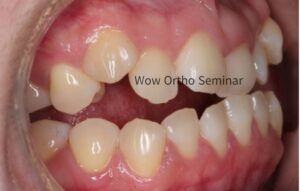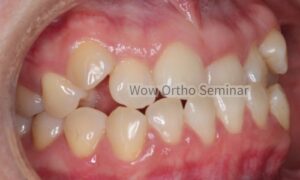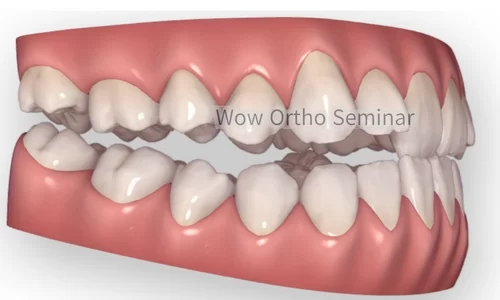
What are Centric relation (CR) and Centric Occlusion (CO, Maximum intercuspation)?
In the past, centric relation position was referred to as most retruded or posterior positions. More recently, it has been suggested that the condyles are in their most superior position in the articular fossa according to Okeson 1.
For Orthodontic patients, you need to evaluate centric relation (CR) position. This is especially important when you see a new patient. CR is identical or similar to CO in most patients. But in some patients, there may a shift from CR to CO.

Functional Class III malocclusion vs skeletal Class III malocclusion
When evaluating anterior crossbite patients, we need to check if there is any shift when closing the mouth.
Skeletal Class III malocclusion
In severe anterior crossbite patient, there will not be any shift. Patient can close the mouth into anterior crossbite without premature contact in the anterior. This is called the skeletal Class III malocclusion. Skeletal discrepancy between upper and lower jaw is usually present with this skeletal Class III malocclusion
Functional Class III malocclusion
However, when jaw discrepancy is not severe, there is premature contact between upper and lower anteriors when mouth is closed. They usually occlude as edge-edge bite first and the mandible slides forward. In this way, posterior can be occluded.
Why CR-CO shift is important for Invisalign?
CR position is the starting point for orthodontic and prosthodontic treatment. If tooth movement is planned using centric occlusion (CO or maximum intercuspation position,MIP), teeth need to move more that it supposed to be.

Why not CO?
If you set CO as a starting point, lower molars need to be distalized considerably more than it supposed to.
References
Okeson, Jeffrey P. Management of temporomandibular disorders and occlusion-E-book. Elsevier Health Sciences, 2019.